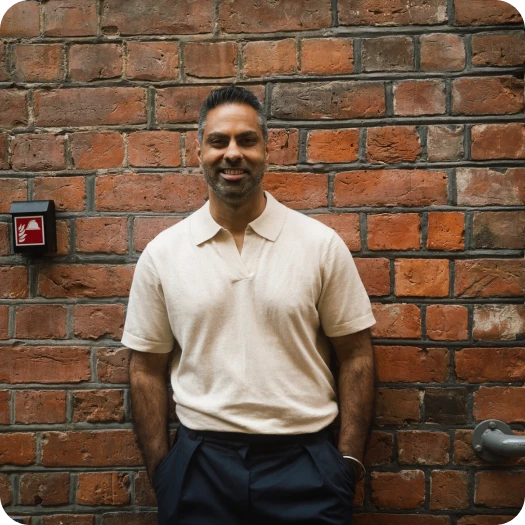Is a Backdoor Roth IRA Worth It? Here’s What You Need to Know


The backdoor Roth IRA is a legal strategy that lets high earners access tax-free retirement growth, despite exceeding the income limits. It’s not a loophole or tax dodge—just a smart way to get the same benefits as a regular Roth IRA.
What Is a Backdoor Roth IRA and Why Should You Care?
A backdoor Roth IRA is a completely legal way for high earners to get around income limits that would otherwise block them from contributing to a Roth IRA. The process involves contributing to a traditional IRA—which has no income restrictions—and then converting that money into a Roth IRA. This simple two-step approach bypasses IRS income limits and gives you access to all the tax-free growth and withdrawal benefits of a Roth IRA, regardless of how much you earn.
Why does this matter? Because once your money is inside a Roth IRA, it grows tax-free forever. You won’t owe taxes on the gains, and you won’t pay a dime when you withdraw the funds in retirement.
For high earners who can't contribute directly due to income restrictions ($165,000 for single filers or $246,000 for married couples as of 2025), the backdoor Roth is the best workaround. And while it's perfectly legal now, tax laws can change—so it may not be an option forever.
For help understanding where a backdoor Roth fits into your broader strategy, you can explore different IRA options here.
Who Actually Needs a Backdoor Roth IRA?
A backdoor Roth IRA isn’t necessary for everyone, but for the right person, it can be a powerful move that unlocks long-term, tax-free growth. If you meet certain criteria, this strategy can significantly boost your retirement savings.
Ideal candidates for a backdoor Roth IRA are:
- High-income earners: If your income exceeds the Roth IRA contribution limits ($165,000 for a single person, $246,000 for a married couple in 2025), a backdoor Roth lets you bypass those restrictions and still get the benefits of a Roth IRA.
- Long-term investors: If you can leave your funds in the Roth IRA for at least five years, the tax-free growth can make a massive difference to your retirement nest egg.
- Those expecting a higher tax bracket in retirement: If you expect to be in the same or a higher tax bracket when you retire, the backdoor Roth makes sense, as it locks in tax-free growth now.
Those who should avoid a backdoor Roth IRA include:
- Low-income earners: If your income is below the Roth IRA contribution limits, just contribute directly to a Roth IRA instead of complicating the process with a backdoor approach.
- Short-term investors: If you need to access your funds within five years, a backdoor Roth IRA may not be suitable due to the IRS's five-year rule on withdrawals.
- Those expecting a lower tax bracket in retirement: If you’ll be in a lower tax bracket in retirement, paying taxes on contributions now (as with a Roth IRA) may cost you more than deferring taxes with a traditional IRA.
Step-by-Step: How to Do a Backdoor Roth IRA Conversion
Setting up a backdoor Roth IRA isn’t complicated, but doing it the right way matters. Follow these key steps to help you avoid headaches at tax time.
1. Open and fund a traditional IRA
Start by opening a traditional IRA and contributing after-tax dollars. Because your income is too high to deduct the contribution, it becomes a non-deductible contribution. For 2025, the limit is $7,000 ($8,000 if you’re 50 or older). Be careful not to exceed this limit.
You’ll also need to file IRS Form 8606 when you do your taxes. This form tells the IRS that your contribution was non-deductible, so you’re not taxed twice when converting.
2. Open a Roth IRA account
If you don’t already have one, you’ll need to open a Roth IRA. Many brokers let you do this alongside your traditional IRA. Some may even require both accounts to be held with them to make the conversion easier, so check with your provider first.
3. Convert your traditional IRA to a Roth IRA
Once your money is in the traditional IRA, it’s time to move it to the Roth IRA. There are three ways to convert:
- Rollover: You withdraw the funds and deposit them into your Roth IRA within 60 days.
- Trustee-to-trustee transfer: Your provider sends the money directly from your traditional IRA to your Roth IRA.
- Same-trustee transfer: The transfer happens between accounts at the same institution.
Whichever method you choose, timing is key. Convert the funds quickly—ideally within a few days—to avoid taxable gains. The faster you convert, the less likely it is that you’ll owe taxes on growth that happens before the transfer.
The Pro-Rata Rule: The Tax Trap You Need to Understand
The pro-rata rule affects your backdoor Roth IRA if you have both pre-tax and after-tax money in your traditional IRAs. Ignoring this rule can cause unwanted tax complications.
Why the pro-rata rule matters for backdoor Roth conversions
The IRS doesn’t view your traditional IRA accounts separately. When you convert funds, they look at the total balance across all your traditional IRAs and apply a ratio of pre-tax to after-tax funds. If you have pre-tax money in any traditional IRA, some of your conversion will be taxable—even if the contribution you made was non-deductible.
How to handle the pro-rata rule and avoid taxes
Consider rolling your pre-tax IRA money into a 401(k) if your plan allows it. This moves the taxable portion out of the equation and leaves only after-tax dollars in your IRA, making the conversion tax-free. Work with a tax advisor to get a clear picture of your IRA balances and calculate what your tax exposure might be.
Avoid These Costly Mistakes When Doing a Backdoor Roth IRA
In addition to understanding the pro-rata rule, it's crucial to be aware of common mistakes that could derail your backdoor Roth IRA strategy. Here are some critical errors you must avoid to keep your conversion smooth and tax-efficient:
1. Waiting too long between contribution and conversion
Any growth in your traditional IRA before you convert becomes taxable. That includes interest, dividends, or capital gains. To minimize taxes, convert within a few days of making the contribution.
2. Misunderstanding the five-year rule for conversions
Each Roth IRA conversion has its own five-year clock. If you withdraw converted funds before five years pass and you’re under age 59½, you may owe penalties. Keep detailed records so you know when each conversion is safe to access.
3. Paying conversion taxes with IRA funds
If you use money from the IRA to pay the conversion taxes, you reduce the amount that gets to grow tax-free in your Roth. Plus, if you’re under 59½, using IRA funds could trigger a 10% penalty. Pay taxes with outside funds whenever possible.
4. Ignoring the pro-rata rule
Failing to account for existing pre-tax IRA balances can lead to an unexpected tax bill. Before converting, review all your IRA accounts and consider strategies like rolling pre-tax funds into a 401(k). Work with a tax advisor to understand the potential tax implications of your conversion.
5. Failing to file Form 8606 for nondeductible contributions
Without Form 8606, the IRS assumes your entire conversion is taxable. That could mean paying taxes on money you already paid taxes on. File this form every year you make a non-deductible IRA contribution.
6. Converting too much in one year
Large conversions can push you into a higher tax bracket, increasing your total tax burden. If you're converting a sizable amount, spread it out over a few years to manage the tax impact more effectively.
Is a Backdoor Roth IRA Even Worth It?
With all the factors we've covered, whether a backdoor Roth IRA is worth it ultimately depends on your unique financial situation. For some, it's an incredible opportunity to build tax-free wealth; for others, it may not be the best move.
A backdoor Roth IRA is likely worth it if…
- You have no existing traditional IRA balances with pre-tax money.
- You can pay conversion taxes with non-IRA funds, preserving your Roth balance.
- Your time horizon until retirement is long, allowing for maximum growth.
- You expect your tax rate to be higher in retirement than it is now.
- You've maxed out your other retirement savings options, like your 401(k).
It's not worth it if…
- You have large traditional IRA balances with pre-tax money (due to the pro-rata rule).
- You need to use IRA money to pay conversion taxes, reducing your long-term growth.
- You expect to need access to your Roth IRA funds within five years.
- You expect your tax rate to be lower in retirement than it is now.
Live Your Rich Life: Making the Right Choice for Your Situation
The backdoor Roth IRA is a powerful tool for high earners who want to build wealth without worrying about future tax bills. But like any financial strategy, it only works if it fits your specific goals. If you're not sure whether it makes sense for you, talk with a qualified financial advisor or tax professional.
And remember: tax laws can change, and this option might not be around forever.
Done correctly, a backdoor Roth can help you move one step closer to a financially secure and tax-free retirement. It's not just about avoiding taxes; it's about using every legitimate tool to build the wealth you want for your ultimate Rich Life.